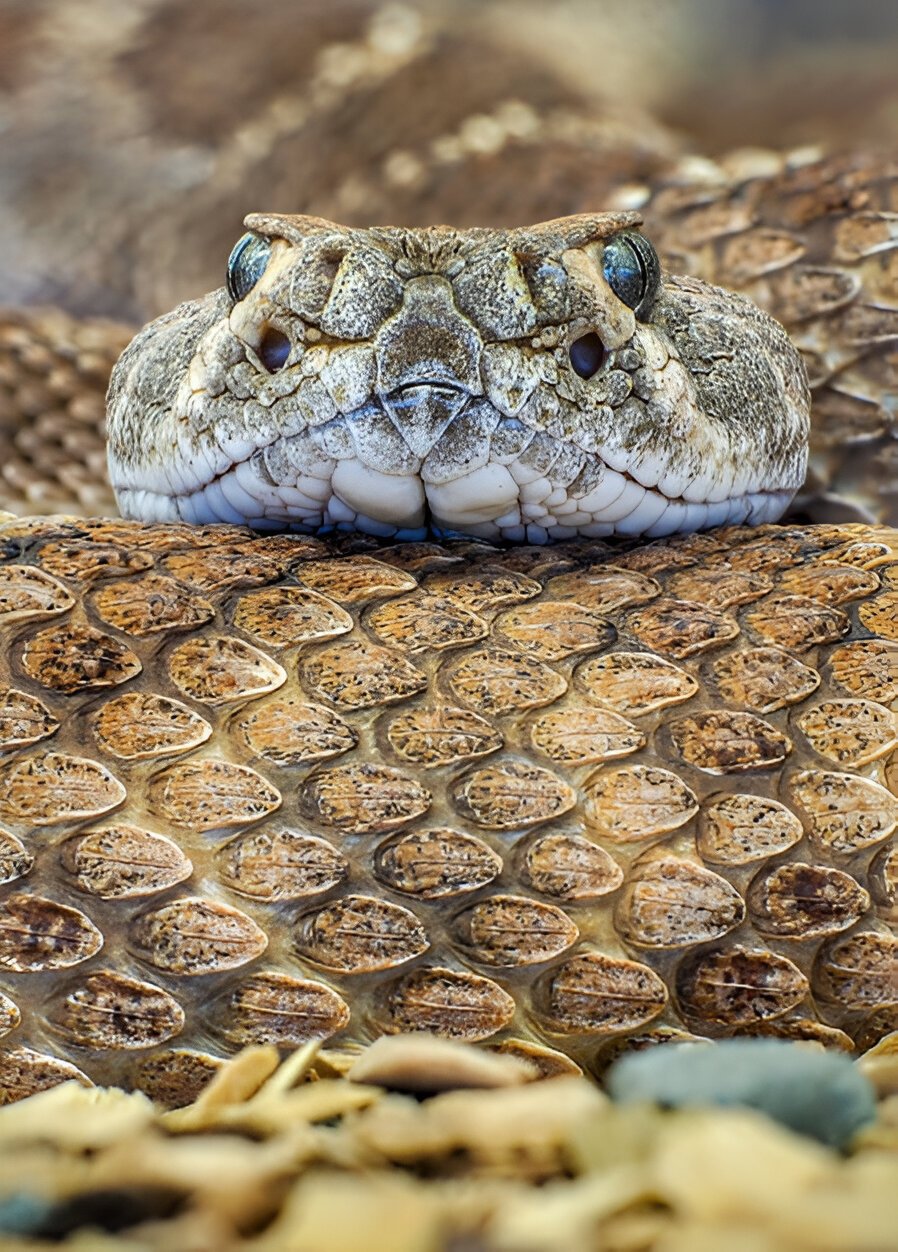Image Credit: Freepik
The world’s largest snake has long captivated human imagination, with tales of colossal serpents slithering through dense jungles and remote waterways. Reports of a 48-foot snake have sparked intense curiosity and debate among researchers and the public alike. These stories have led to numerous attempts to document and verify the existence of such massive reptiles, with alleged sightings and images circulating on social media and news outlets.
While claims of a 48-foot snake continue to intrigue, scientists have been working to establish the true size limits of known snake species. This article delves into the legend of the world’s largest snake, examining verified records of giant serpents and the factors that influence their growth. It also explores the conservation efforts aimed at protecting these remarkable creatures and the complex relationship between humans and large snakes in various parts of the world, including Indonesia and the Amazon rainforest.
Also Read: Breaking Down the Alex Murdaugh Becky Hill Scandal
The Legend of the 48-Foot Snake
The tale of a 48-foot snake has captured the imagination of many, sparking debates and investigations into the existence of such a colossal serpent. This legend has its roots in both ancient history and modern-day claims.
Origins of the Claim
The origins of the 48-foot snake legend can be traced back to the discovery of Titanoboa, an extinct species that lived approximately 60 million years ago. Paleontologists estimate that Titanoboa could have reached lengths between 42 and 49 feet, with a body diameter of 3 feet. The remains of this ancient snake were first found near fossilized plants, giant turtles, and crocodiles dating back to the Paleocene Epoch in Colombia.
Reported Sightings
One of the most famous reported sightings of a giant snake occurred in 1959. Belgian pilot Remy Van Lierde claimed to have spotted a 50-foot long snake while flying over the Katanga Province in the Belgian Congo. He described the reptile as dark brown and green with a white belly, and reported that it raised its head about 10 feet off the ground as if to attack the helicopter.
Scientific Skepticism
Despite the intriguing nature of these claims, the scientific community remains skeptical about the existence of such enormous snakes in modern times. No conclusive scientific evidence has been presented to substantiate the existence of a new or notably large snake species. Experts suggest that reported sightings may be misidentifications of known species, such as the African Rock Python, which can grow to impressive sizes but still fall short of the legendary 48-foot length.
The Smithsonian has contributed to public interest in giant snakes by creating a 48-foot replica of Titanoboa, which was exhibited at the National Museum of Natural History. This exhibit, along with documentaries and TV shows, has helped to keep the legend of the 48-foot snake alive in popular culture, while also educating the public about the fascinating world of prehistoric giant snakes.
Also Read: Top Alexa Demie Movies and TV Shows You Must Watch
World’s Largest Verified Snakes
The world’s largest snakes belong to the Boidae and Pythonidae families, which include anacondas, pythons, and boa constrictors. These non-venomous constrictors have captivated researchers and the public alike with their impressive sizes. Three species stand out as the most notable contenders for the title of the world’s largest snake: the reticulated python, the green anaconda, and the Burmese python.
Reticulated Python
The reticulated python (Malayopython reticulatus) holds the record as the longest snake in the world. Native to Southeast Asia, these pythons regularly reach lengths exceeding 6.25 meters. The longest reliably documented specimen measured an astounding 10 meters, discovered in 1912. This makes the reticulated python longer than a giraffe is tall. While they are incredibly long, they have a more slender build compared to their anaconda counterparts.
Green Anaconda
The green anaconda (Eunectes murinus) is renowned for its impressive girth and weight. Found in the tropical regions of South America, particularly in the Amazon and Orinoco basins, these massive snakes can reach lengths of up to 8.43 meters. The heaviest recorded anaconda weighed a staggering 227 kilograms, with a girth of 1.11 meters. Green anacondas are known for their bulky build, with a 5.2-meter-long anaconda weighing approximately the same as a 7.3-meter-long reticulated python.
Burmese Python
The Burmese python (Python bivittatus) is the second-longest snake species. The largest verified specimen, found in the wild on July 10, 2023, measured 5.7912 meters (19 feet) in length. These pythons can also attain significant weights, with the heaviest reliable record being 182.8 kilograms for a captive individual named “Baby” in 1998. Burmese pythons have gained notoriety in Florida, where they have become an invasive species, with the longest captured specimen there measuring 5.74 meters (18 feet 9 inches).
Factors Influencing Snake Size
The size of snakes is influenced by various factors, including their habitat, diet, and genetic makeup. These elements play a crucial role in determining the growth and ultimate dimensions of different snake species.
Habitat and Environment
The environment in which snakes live has a significant impact on their size. Temperature and humidity affect snake species differently, particularly in relation to their reproductive processes. Oviparous species, which lay eggs, are negatively impacted by increased temperatures and decreased rainfall, as their nests require moisture for embryonic development. Viviparous species, which give birth to live young, face challenges with higher body temperatures, which can lead to increased energetic costs during various stages of reproduction.
Diet and Prey Availability
A snake’s diet and the availability of prey in its habitat have a direct influence on its size. Larger snake species tend to have a more diverse range of prey options. For instance, small-bodied pythons often have specialized diets dominated by ectothermic prey, while large-bodied pythons typically consume more endothermic prey. This relationship between body size and diet is not linear, however, as large-bodied species may exclude smaller prey items from their diet.
Genetic Factors
Genetic factors play a crucial role in determining snake size. Research has shown that mutations in genetic switches, known as enhancers, can affect limb development in snakes. For example, a trio of mutations in the enhancer of the Sonic hedgehog gene disrupts the genetic circuit that drives limb growth. These genetic changes, which occurred approximately 100 million years ago, have contributed to the diverse range of snake sizes we see today.
Also Read: Amarillo-Texas Bullied Boy Finds Friendship After Viral Video
Conservation and Human Interaction
Habitat Loss
The conservation of large snakes faces significant challenges due to habitat loss. Deforestation, urban encroachment, and pollution have damaged the environments of many snake species, including the Puerto Rican boa. As an island species, this boa is particularly vulnerable to habitat destruction, as it has nowhere else to go. Climate change, agricultural expansion, and urbanization have also impacted snake distributions and behaviors, potentially altering their interactions with humans.
Illegal Pet Trade
The global wildlife trade has a substantial impact on snake populations. Nearly a million endangered and threatened snakes are legally sold on the international market each year, with many more traded illegally. This trade not only puts snake species at risk but also poses potential dangers to human health and ecosystems. In some areas, poaching has contributed to population declines, with snakes hunted for their meat, skin, and even oil, which was historically believed to provide relief for aching joints.
Coexistence Strategies
To mitigate human-snake conflicts, education and awareness programs are crucial. These initiatives aim to change public perception of snakes from “vicious, dangerous, and unwanted” to valuable components of ecosystems. Local engagement is vital, involving farmers, students, and medical professionals as stakeholders. Specific programs focus on snake behavior, ecosystem roles, and snakebite management. Community efforts include enhancing wildlife-friendly traditional practices and discouraging unethical ones. Promoting the use of mobile applications and developing identification manuals can help people correctly identify snake species, potentially reducing preventive killings and improving coexistence between humans and these important reptiles.
Conclusion
The world of giant snakes continues to captivate our imagination, blending ancient legends with modern scientific discoveries. From the prehistoric Titanoboa to today’s reticulated pythons and green anacondas, these colossal creatures have a significant impact on ecosystems and human culture alike. The search for the elusive 48-foot snake, while unverified, has sparked curiosity and led to valuable research into the factors that influence snake size, including habitat, diet, and genetics.
As we move forward, the conservation of these remarkable reptiles becomes increasingly crucial. Habitat loss and illegal trade pose serious threats to snake populations worldwide. To address these challenges, it’s essential to develop effective strategies to coexist with these important members of our ecosystems. By fostering education, awareness, and community engagement, we can work towards a future where humans and snakes thrive together, preserving the awe-inspiring diversity of our natural world.
Also Read : Hugh Jackman Boyfriend: The Truth Behind the Rumors
FAQs
- Is there any scientific evidence of a 48-foot snake?
- No conclusive scientific evidence supports the existence of a modern-day 48-foot snake, though Titanoboa, an extinct species, may have reached such lengths.
- What is the longest snake species currently living?
- The reticulated python holds the record as the longest living snake species, with the longest specimen measuring 10 meters (32.8 feet).
- What factors influence the size of snakes?
- Habitat, diet, genetic makeup, and environmental conditions all play significant roles in determining a snake’s size.
- What are some of the largest verified snakes in the world?
- The reticulated python, green anaconda, and Burmese python are among the largest verified snakes, with some individuals reaching over 20 feet in length.
- What is Titanoboa?
- Titanoboa is an extinct species of snake that lived around 60 million years ago, believed to have reached lengths between 42 and 49 feet.
- Are there any famous sightings of giant snakes?
- One of the most famous sightings occurred in 1959 when a Belgian pilot reported seeing a 50-foot snake in the Belgian Congo.
- What is the impact of habitat loss on large snakes?
- Habitat loss due to deforestation, urban encroachment, and climate change poses significant threats to large snake populations.
- How do snakes contribute to ecosystems?
- Snakes play crucial roles in controlling pest populations, maintaining balanced ecosystems, and serving as prey for other wildlife.
- What are the challenges in conserving large snakes?
- Conservation challenges include habitat destruction, illegal wildlife trade, and human-snake conflicts.
- How can humans coexist with large snakes?
- Education, awareness programs, and community engagement are key strategies for fostering coexistence between humans and large snakes.




